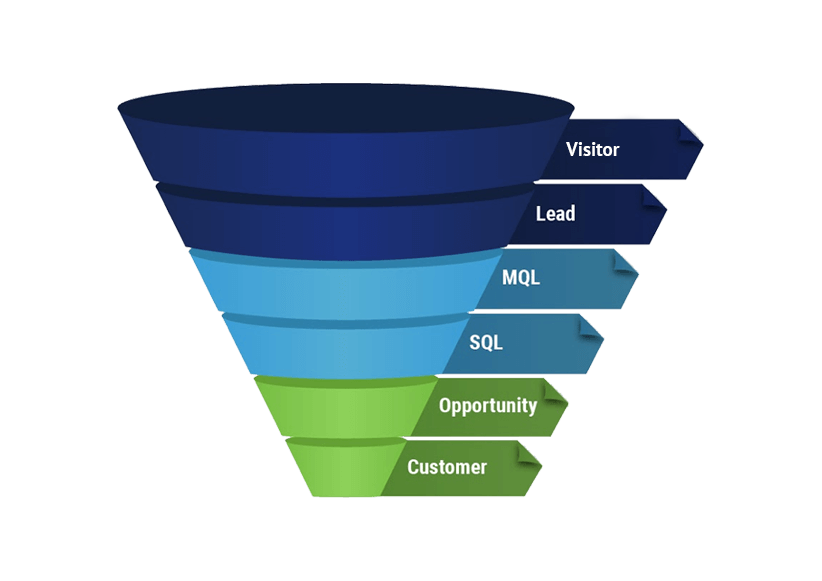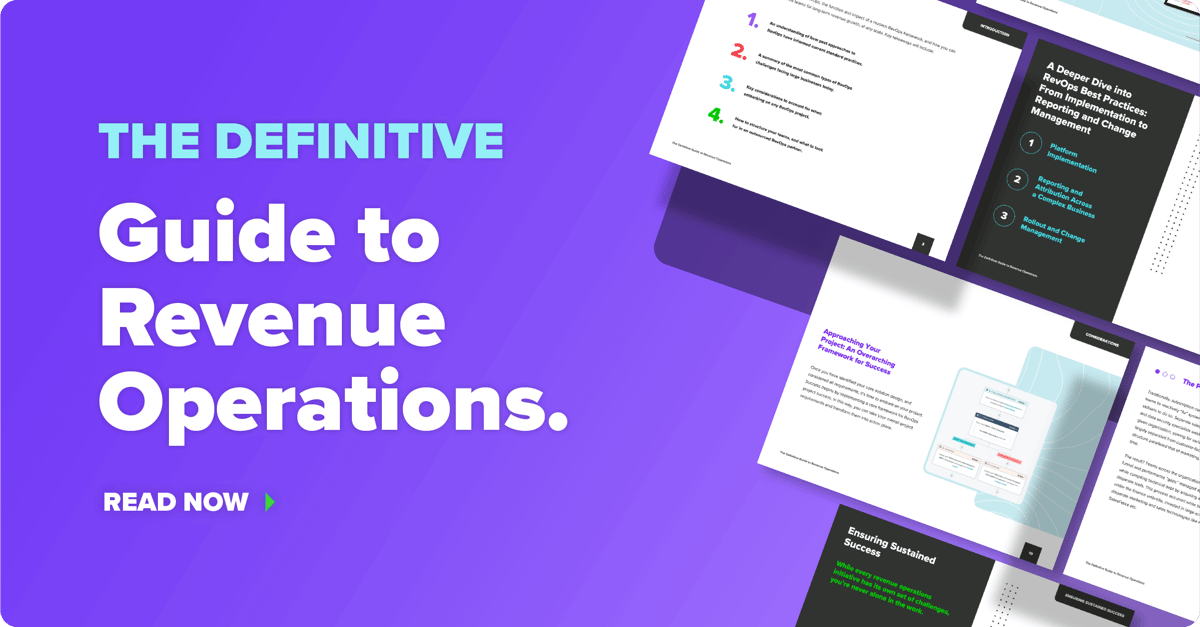How to Diagnose and Fix Gaps in Your Marketing and Sales Funnel

It’s easy to tell when your marketing and sales funnel has sprung a leak; you're seeing site traffic, but Leads aren't progressing down your funnel through intended conversion pathways. Any marketer can attest to the detrimental consequences of ignoring these funnel gaps. What’s trickier is determining exactly where those gaps are and how to fix them effectively.
Being able to diagnose gaps within your marketing and sales funnel is essential to accelerating growth, promoting marketing and sales alignment and ultimately driving ROI. Keep your marketing and sales funnel functioning flawlessly by taking the following steps:
Establish Benchmark Lifecycle Conversion Rates
Establishing lifecycle conversion rates goals for each stage of the marketing and sales funnel is the first step to being able to effectively eliminate potential gaps.
Working backward from your revenue goal, use historical data on lifecycle conversion rates to determine how many leads you need in your marketing and sales funnel each month to meet your goal. If you don’t have enough data available to establish personalized benchmarks, industry benchmarks are the next best choice.

For example, if you want to produce at least $1,500 in revenue and historical data shows you need five Opportunities to generate this amount, use this number to shape your annual Lead generation quota and break that down by month.
Say you have a conversion rate of twenty percent for each lifecycle stage. To generate those five Opportunities, you need at least twenty-five Sales Qualified Leads (SQLs). To generate those twenty-five SQLs, you need at least 125 Marketing Qualified Leads (MQLs) and to generate 125 MQLs, you need to capture at least 625 Leads. Working backward from your revenue goal will give you an idea of the cadence you need to maintain to see sufficient ROI. Identifying and establishing benchmark conversion rates for each lifecycle stage will enable your team to gain a holistic understanding of how you’re performing in relation to your goals.
Visitor to Lead
If prospects are visiting your website but your subscriber to Lead rate is dismal, gaps are occuring at the top of your marketing and sales funnel. Sure, you might be experiencing ample site traffic, but none of those visitors are actually converting into Leads that you can follow-up with.
This is a sign that your site is lacking in conversion opportunities. Here are a few questions to help you identify factors that could be contributing to your poor Subscriber to Lead conversion rate:
- Are you using gated landing pages to capture Lead information with relevant content offers?
- If you are gating your content, is your form strategy properly configured?
- Have you been incorporating actionable CTAs with a clear value proposition into your site content?
- Is your site navigation and architecture persona-driven?
- Is your navigation “sticky” and does it include a bottom-of-funnel CTA?
If you answered “no” to any of these questions, your site could be an excellent candidate for conversion optimization. By implementing conversion optimization tactics, you can effectively alleviate the gaps in the top of your marketing and sales funnel.
Lead to Marketing Qualified Lead (MQL)
An MQL is a Lead that has been determined a good fit by the marketing team and is ready to be nurtured with marketing content.
If you’re generating a ton of Leads, but none of them are converting into MQLs, this could be a sign that your content is drawing in prospects that don’t align with your buyer personas. Ideally, your content should attract only qualified Leads. Reevaluate your content strategy to ensure that it is persona-driven and primed to generate qualified Leads.
Consider implementing a content audit to ensure that your website is effectively configured to attract your ideal buyer persona. By assessing your site with your ideal personas in mind, you can ensure that your marketing efforts aren’t being wasted on Leads that will never close.
MQL to Sales Qualified Lead (SQL)
Essentially, a SQL is an MQL that has been qualified by the sales team for direct outreach. If your MQLs aren’t converting into SQLs, this could be a sign that your sales team simply doesn’t have enough time to follow-up for qualification.
If you experience gaps in this stage of the funnel, consider your lifecycle conversion rate goal for MQL to SQL in relation to your revenue team resources. It’s possible that too many MQLs are coming through the funnel without enough sales team members to follow-up quickly, causing MQLs to drop out of your funnel entirely. Ensure that both marketing and sales are properly equipped to keep up with the demands of your funnel.
SQL to Opportunity
An Opportunity is a contact that is actively engaged in a sales conversation and represents potential revenue. At this point in the sales cycle, the Opportunity has been deemed a good fit for your company and vice versa.
If sales is qualifying Leads but those Leads are struggling to convert into Opportunities, this could be a sign that both parties might not be on the same page in terms of fit or interest. A Lead could be a perfect fit for your business, but if the Lead isn’t convinced that the relationship could be valuable, they’ll never convert into an Opportunity.
It’s possible that sales is prematurely qualifying Leads that haven't been nurtured long enough to stimulate an appropriate amount of interest. In turn, sales is required to exert even more time and resources to fill in the gaps. Consider reevaluating your SQL qualification criteria to ensure that Leads who aren't ready for a sales conversation aren’t wrongfully being marked as Opportunities.
Opportunity to Customer
If you’re experiencing a low Opportunity to customer rate, this could signify a larger issue affecting your entire marketing funnel. If the opportunity is qualified according to your buyer persona criteria and your team is still struggling to close, this could mean that you need to reevaluate your overall buyer persona strategy.
Consider the following questions to help you identify any errors within your persona strategy:
- Which markets are you developing personas for?
- Which of your company's solutions align with these markets? What is your current value proposition?
- What features do your prospects care about most?
- What position do they occupy within their organization?
- What are their daily concerns and responsibilities?
Ensuring that your buyer personas accurately align with Leads who are most likely to close is essential to driving ROI. Assess your buyer persona and qualification strategy with these questions in mind to ensure that your marketing and sales efforts aren’t being misdirected.
Need some help getting started? Download our Marketing Goals Calculator Template below to identify key benchmarks and start setting smart, actionable goals.





